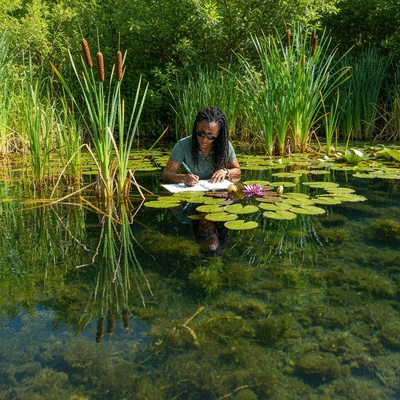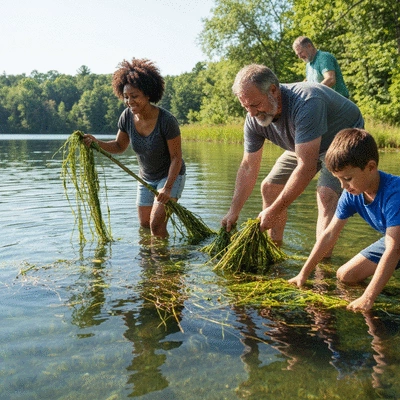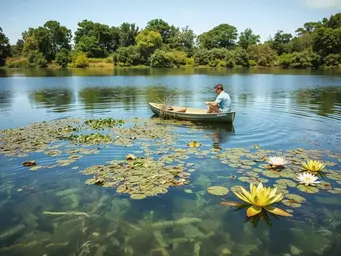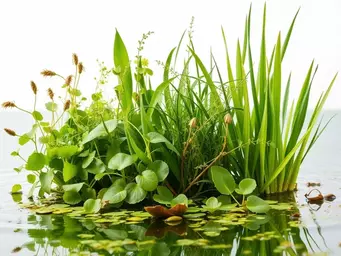Benefits of an Integrated Approach
- ✓ Enhanced Ecological Health
- ✓ Reduced Chemical Reliance
- ✓ Improved Habitat for Native Species
- ✓ Cost-Effective Solutions

Engaging in the management of aquatic weeds isn't just a task—it's a vital step towards preserving the integrity of our ecosystems. Did you know that the health of our waterways directly influences the biodiversity they support? Understanding integrated aquatic weed management can empower you to make impactful changes in your environment.
Integrated Aquatic Weed Management (IAWM) combines various control methods to achieve sustainable outcomes and aims to create balanced ecosystems. This approach ensures long-term solutions and ecological health.
When it comes to managing aquatic weeds, integrated approaches are key to achieving effective and sustainable outcomes. As an ecologist deeply invested in preserving aquatic ecosystems, I find that understanding the principles behind integrated aquatic weed management can significantly help landowners and managers tackle these persistent challenges. This comprehensive strategy not only considers various weed control methods but also aims to create a balanced ecosystem.
In this section, we'll explore what integrated aquatic weed management involves, why it’s essential, and how it ties into broader pest management frameworks. Together, we can work towards healthier waterways!
Integrated aquatic weed management (IAWM) is a holistic approach that combines multiple strategies to effectively control aquatic weed populations. This includes the use of mechanical, biological, and chemical methods, allowing for a flexible response tailored to specific infestations and environmental conditions. By integrating these methods, we can minimize negative impacts on the ecosystem while effectively managing invasive species. For further insights into integrated weed management, explore this resource from the Queensland Department of Primary Industries.
By integrating diverse techniques, IAWM facilitates a more sustainable approach to weed control, ensuring that we preserve biodiversity while achieving our management goals.

Choosing an integrated approach enhances the effectiveness of aquatic weed management efforts. This strategy allows us to address the complexities of aquatic ecosystems by considering various factors, including weed species, water conditions, and local biodiversity. Moreover, integrated approaches often lead to more sustainable outcomes, reducing the likelihood of weed resistance to any single method. Research projects by institutions like the USDA Agricultural Research Service highlight the importance of these comprehensive strategies.
As we strive for ecological balance, embracing an integrated approach ensures we are better equipped to manage invasive aquatic weeds effectively.
Integrated Pest Management (IPM) plays a crucial role in aquatic weed control by providing a structured framework for decision-making. IPM considers the life cycles and behaviors of aquatic weeds, allowing for timely intervention and effective management strategies. By utilizing data and research, we can better understand the dynamics of weed populations and their interactions with the ecosystem. For a detailed guide on the principles of IPM, consider consulting publications from institutions like New Mexico State University.
As I work alongside various stakeholders, I emphasize the importance of IPM in developing effective aquatic weed management plans that are responsive to changing conditions and challenges.
In the next section, we will dive deeper into the specific methods involved in integrated aquatic weed management, exploring how mechanical, biological, and chemical techniques can be effectively combined for optimal results.
Did you know that community involvement can enhance the effectiveness of aquatic weed management? Studies show that when local stakeholders are engaged, the success rates of management strategies increase significantly. By fostering collaboration and sharing knowledge, we can create a united front against invasive species.
As we wrap up our discussion on integrated aquatic weed management, it's essential to emphasize the myriad benefits this holistic approach offers. By combining mechanical, biological, and chemical methods, we not only tackle the immediate challenges posed by invasive species but also work towards the long-term sustainability of our waterways. This strategy allows us to achieve effective control while maintaining the delicate balance of aquatic ecosystems.
Some of the key benefits of integrated aquatic weed management include:
By thoughtfully integrating these methods, we empower ourselves to manage aquatic weeds efficiently while fostering a resilient ecosystem that supports both human and environmental needs. It's a path forward that recognizes the complexity of our waterways and the importance of every organism within them!
Implementing an integrated approach to aquatic weed management requires careful planning and consideration. Here are some steps to guide you:
As a passionate ecologist, I’ve seen firsthand that successful implementation hinges on understanding the specific dynamics of your waterway. Engaging in this process is not only about controlling weeds; it's about restoring balance and enhancing the vitality of aquatic ecosystems.

Community involvement is crucial in the journey toward effective aquatic weed management. Engaging stakeholders—including landowners, local organizations, and government agencies—can significantly enhance your efforts. Here are some ways to foster community engagement:
By building a collaborative community around aquatic management, we not only empower individuals but also foster a sense of shared responsibility for our precious waterways!
Incorporating aquatic biodiversity into management plans is not just beneficial; it’s essential! Biodiversity plays a critical role in maintaining ecosystem stability and resilience. Here are some reasons to consider:
At Aquatic Weed Solutions, we believe that managing aquatic weeds should go hand in hand with promoting biodiversity. By prioritizing the conservation of native species, we can pave the way for healthier aquatic habitats and more effective weed management.
Below are some common questions regarding Integrated Aquatic Weed Management (IAWM).
As we look to the future, it's vital to continue investing in research and development for innovative aquatic management techniques. This ongoing effort will enhance our understanding of aquatic ecosystems and improve our ability to effectively manage invasive species. Staying informed about the latest advancements allows us to adapt our strategies and implement cutting-edge solutions that protect our waterways.
I'm passionate about inspiring others to join the movement for effective aquatic weed management! Whether you're a landowner, ecologist, or just someone who loves healthy waterways, there are numerous ways you can contribute. Get involved in local initiatives, educate your peers, and advocate for sustainable practices within your community. Together, we can make a real difference!
Lastly, it's essential to advocate for water management policies that support sustainable practices. Engaging with policymakers and providing them with data-driven insights can promote the development of regulations that prioritize ecological health. These policies should focus not only on controlling invasive species but also on supporting biodiversity and ecosystem restoration efforts.
By fostering a collaborative approach between scientists, policymakers, and community members, we can build a framework for sustainable aquatic weed management that benefits both our ecosystems and communities. Let’s work together to ensure our waterways thrive for generations to come!
Here is a quick recap of the important points discussed in the article:
Managing Aquatic Weeds Effectively

As we delve into the hidden challenges of our water ecosystems, understanding the role of aquatic we
Impact of Aquatic Weeds on Recreation

As we dive into the world of aquatic ecosystems, the presence of invasive aquatic weeds may not only
Understanding Aquatic Weed Varieties

What if understanding aquatic weeds could be the key to restoring our waterways? As we dive deeper i
Managing Aquatic Weeds Effectively
Impact of Aquatic Weeds on Recreation
Understanding Aquatic Weed Varieties
Integrated Aquatic Weed Management Methods
Integrated Approaches to Aquatic Weeds